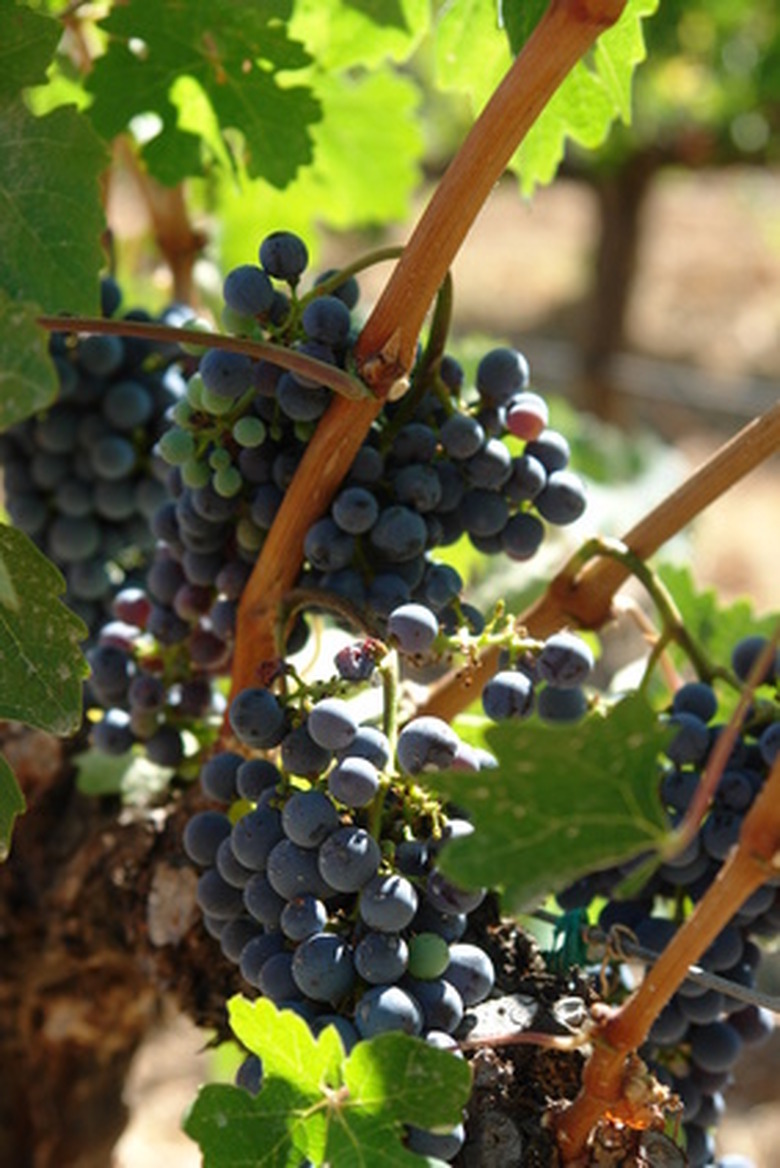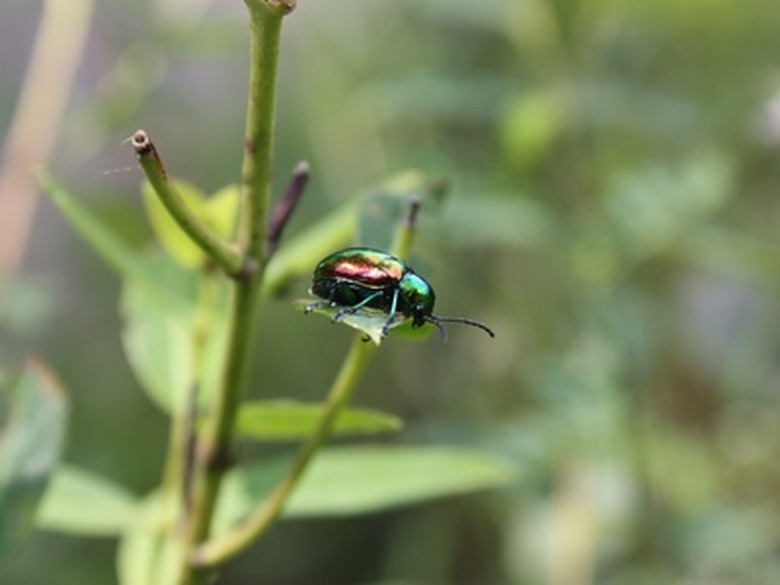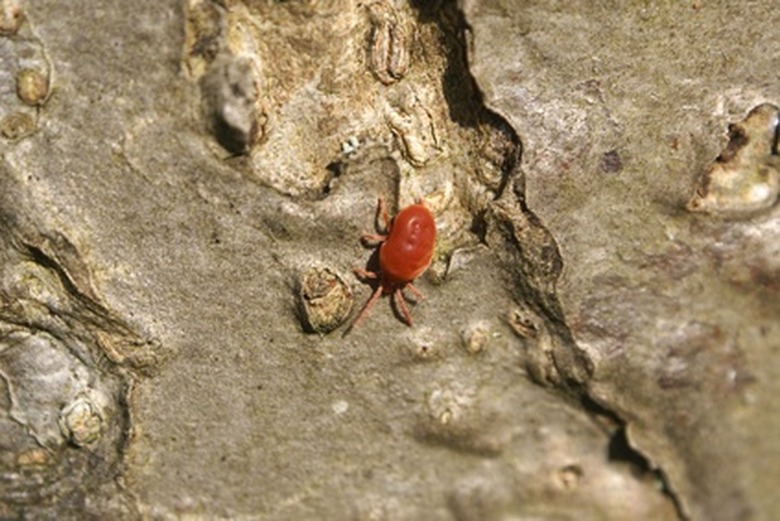Types Of Concord Grape Pests
Grapes are susceptible to many different pests, most of which–unless the infestation is severe–are only unsightly. Nevertheless, these pests can damage the grapevine's leaves, stems, flowers and fruits if left unchecked. Properly identifying the pest is the most important step in treating an infestation and understanding its impact on your grapevines. After you've determined what kind of pest is attacking your grapes, consult your local agricultural extension service to discover the appropriate remedy.
Grape Mealybugs
The grape mealybug (Pseudococcus maritimus) is a tiny soft-bodied insect that has a flattened, oval-shaped body with distinct segments. Grape mealybugs often look like they have a white, waxy coating on their bodies. Grape mealybugs don't harm grapevines, according to the University of California at Davis Integrated Pest Management Program, but they do secrete a sticky liquid called honeydew that often collects soot mold spores, covering the leaves and fruits with a black coating.
- Grapes are susceptible to many different pests, most of which–unless the infestation is severe–are only unsightly.
- Grape mealybugs don't harm grapevines, according to the University of California at Davis Integrated Pest Management Program, but they do secrete a sticky liquid called honeydew that often collects soot mold spores, covering the leaves and fruits with a black coating.
Japanese Beetles
Japanese beetles are relatively easy to identify by their metallic-green and shiny armored exteriors. The Japanese beetles feed on the grapevine leaves and are most prevalent on vines located closest to turfgrass or pasture areas, where the beetle larvae also feed, says .
Grape Berry Moths
The grape berry moth (Endopiza viteana Clemens) is small and has a mottled brownish-gray body. The adult moths lay their eggs in the grapevine rows during early April until bloom time, according to University of Rhode Island Extension, which calls the moth the "by far the worst insect pest of Northeastern grapes." The eggs hatch in mid-May and the larvae pupate by spinning cocoons around the berries and leaves, feeding on the fruits as they grow. The damaged grapes have tunnels under the skin and tend to rot before they fully mature.
Climbing Cutworms
The climbing cutworm includes a wide range of moth larvae species that feed on grape fruit buds, shoots and young leaves at night during the spring. The chewed buds become injured and usually fail to grow the necessary fruit clusters and canes for grape production. Climbing cutworms, typically pale and 1 to 2 inches long, hide in the soil near the base of the grapevines during the daytime when they aren't feeding.
- Japanese beetles are relatively easy to identify by their metallic-green and shiny armored exteriors.
- Climbing cutworms, typically pale and 1 to 2 inches long, hide in the soil near the base of the grapevines during the daytime when they aren't feeding.
Mites
Several species of mites infest grapes, says URI Extension, including the grape erineum mite (Colomerus vitis), two-spotted spider mite (Tetranychus urticae) and European red mite (Panonychus ulmi). European red mites are tiny insects that are seen on the undersides of grapevine leaves during summer, causing the leaves to turn bronze in color. The grape erineum mite is light-yellowish with two pairs of legs. Also feeding on the grape foliage, the erineum mites cause the young leaves to develop bright-pink to reddish swellings. Two-spotted spider mites are pale and slightly larger than the grape erineum mites. They cause similar foliage damage, but also leave silk webbing on the infested leaves.
Grape Leafhoppers
Adult grape leafhoppers are white with yellowish-brown mottled markings on their small, slender and wedge-shaped bodies. These winged insects are less than 1/4-inch long and tend to jump or fly away when disturbed. Grape leafhoppers feed on the grapevine's foliage, causing pale dots or stippling of the upper leaf surfaces. They also tend to cover fruit with drops of dark, sticky excrement. Severe infestations of grape leafhoppers can cause the leaves to develop large bleached areas, turn brown, die and fall off the vine.
- Several species of mites infest grapes, says URI Extension, including the grape erineum mite (Colomerus vitis), two-spotted spider mite (Tetranychus urticae) and European red mite (Panonychus ulmi).
- Grape leafhoppers feed on the grapevine's foliage, causing pale dots or stippling of the upper leaf surfaces.


